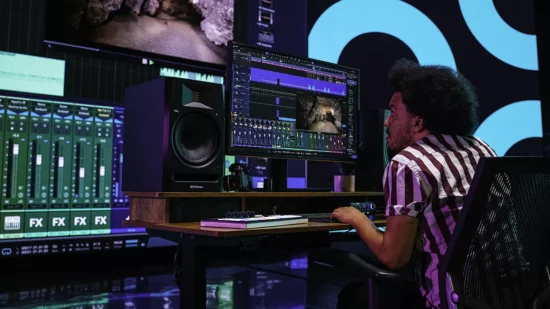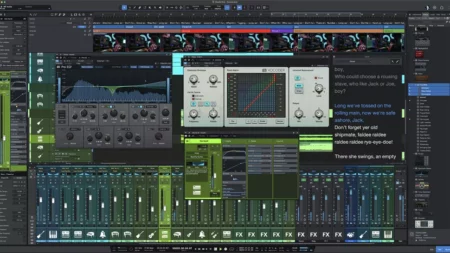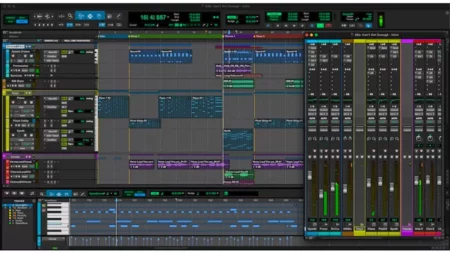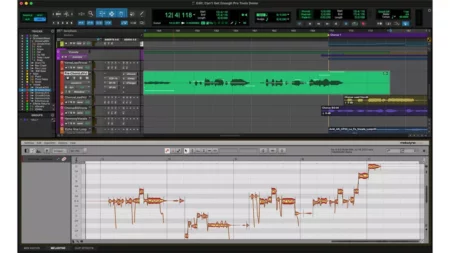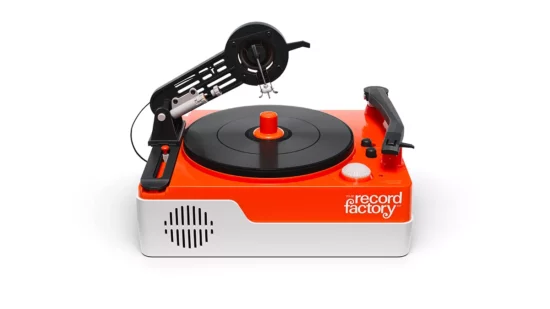PreSonus launches Studio One 6
PreSonus launches Studio One 6: DAW update includes smart recording templates, a customisable interface and lyric support
PreSonus has released Studio One 6, the first major update to its DAW since the company was acquired by Fender in 2021. And you can see some signs of change in Studio One 6.
New Smart Templates are designed to make it easy to get started on a specific task right away. These comprise preconfigured tracks and channels with a customised interface and automatic download of required content, with options for basic recording, beatmaking, mixing stems, mastering an album, setting up for a live show and more. There’s a drop zone for importing audio, video and MIDI files, and interactive tutorials with instructions and links to related video content.
The Customisation Editor enables you to show or hide almost all of Studio One 6’s tools and functions, so you can streamline the interface to suit your workflow and for the job at hand. Beginners can strip things back to the essentials, while more experienced users can put power features right under their fingertips.
Customised interfaces can be saved and recalled, and again, there are preset options that can be used as jumping-off points.
Songwriters might also appreciate the new lyric support – you can now add lyrics to a project via a dedicated editor. In Score and Piano views, lyrics can be attached to notes word by word or syllable by syllable, leaving no room for confusion.
On a multimedia tip, there’s now a Global Video Track. Clips can be added by dragging them on to the timeline, and the track can hold an unlimited number of clips. Thumbnails are generated automatically, and there’s a dedicated sub-track for embedded audio to use as a reference. This includes a mixer channel, plugin processing and output routing options.
You can also expect deeper integration with PreSonus Sphere – specifically, its cloud-based collaboration Workspaces. There are now sharing and sync options built into the main menu, and a new installation window enables Sphere members to explore, download and install content using a variety of display, search and filter options.
Lastly, no major DAW update would be complete without some new plugins, and Studio One 6 gets some in the form of the new De-Esser and Vocoder. Improvements have been made to ProEQ, Autofilter, Mai Tai, Sample One XT and Presence XT, as well
“In this latest iteration, the team stayed focused on listening to loyal users’ needs, creating innovative solutions to boost productivity in the professional audio production space,” said Arnd Kaiser, General Manager, Software at PreSonus. “We want engineers, producers, recording musicians and creators around the world to feel supported and inspired to build their best work yet.”
“We are excited for the launch of Studio One 6 and are fully invested in supporting the continued expansion and adoption of Studio One as the total solution for professional and committed at-home creators,” said Evan Jones, Fender CMO. “The global adoption of digital creative and productivity tools continues to grow and expand across all forms of musical expression, in the hands of an even wider audience of creators, producers, mix engineers, and artists.”
Studio One 6 pricing is below. You can find out more on the PreSonus website.
- PreSonus Sphere: ($14.95/month, $164.95/year or €12.20/month/€134.10/ year) Current PreSonus SphereTM members will receive Studio OneTM 6 in their accounts at no extra cost
- Studio One 6 Professional digital audio workstation for macOS and Windows: $399.95
- Studio One 6 Artist: $99.95
- All previous Studio One Professional versions to Studio OneTM 6 Professional Upgrade: $149.95
- All previous Studio OneTM Artist versions to Studio OneTM 6 Professional Upgrade: $299.95
- All previous Studio OneTM Artist versions to Studio OneTM 6 Artist Upgrade: $49.95
- Studio OneTM Professional 30-Day Demo: Free* & Studio OneTM Prime: Free
(*Prime and 30-Day Professional Demo not available at launch.)
